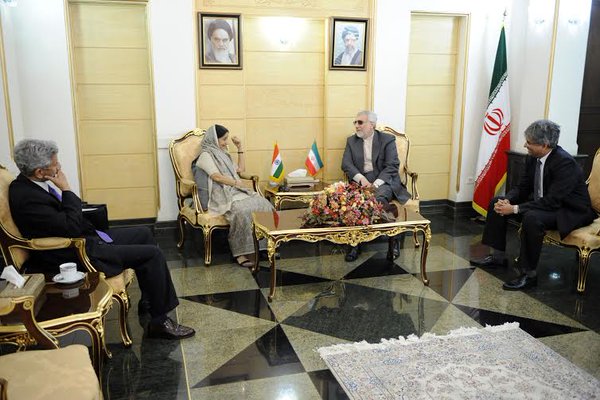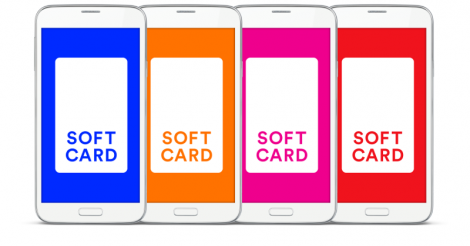Indian Foreign Minister Sushma Swaraj has visited Iran on 17th of April, with the aim of re-energising relationships with Tehran.

India and Iran have a centuries old history of relations. Let’s take a look the generations old India-Iran relations::
I. Political Relations:
India-Iran relations span centuries marked by meaningful interactions. The two countries shared a border till 1947 and share several common features in their language, culture and traditions. Both South Asia and the Persian Gulf have strong commercial, energy, cultural and people-to-people links.
Independent India and Iran established diplomatic links on 15 March 1950. In addition to the Embassy in Tehran, India currently has two Consulates in Iran -Bandar Abbas and Zahedan. The Shah visited India in February/March 1956 and Prime Minister Pandit Jawaharlal Nehru visited Iran in September 1959. Prime Minister Smt. Indira Gandhi visited Iran in April 1974 and Prime Minister Shri Morarji Desai visited in June 1977. The Shah, in turn, visited India in February 1978.
The Iranian Revolution in 1979 introduced a new phase of engagement between India and Iran marked by exchange of high level visits of Indian Prime Minister Shri Narasimha Rao in September 1993, Iranian President Akbar Hashemi Rafsanjani in April 1995 and Indian Vice President Shri K. R. Narayanan in October 1996. The trend was consolidated and enhanced at the turn of the millennium with visits by Prime Minister Shri Atal Behari Vajpayee in 2001 and a return visit by President Mohammad Khatami in 2003, when he was also the Chief Guest at the Republic Day function. The Iranian President Dr. Mahmoud Ahmadinejad visited India on 29 April 2008.
Prime Minister Dr. Manmohan Singh visited Iran to attend the 16th Non-Aligned Movement (NAM) Summit held in Tehran on 28-31 August 2012. Iran assumed the Presidency of NAM in 2012. On the sidelines, Hon’ble Prime Minister met Supreme leader Ayatollah Ali Khamenei and President Dr. Mahmoud Ahmadinejad. Both sides reviewed the entire gamut of bilateral relations and called for further strengthening the centuries old relationship between India and Iran. Hon’ble External Affairs Minister Shri. Salman Khurshid (EAM) visited Tehran for the 17th India-Iran Joint Commission Meeting (JCM) on 03-05 May 2013. He called on President Dr. Mahmoud Ahmandinejad, Majlis Speaker Dr. Ali Larijani and Dr. Ali Akbar Velayati, Senior Advisor to the Supreme Leader on International Affairs.
Hon’ble Vice President of India Shri M. Hamid Ansari graced the swearing-in ceremony of the newly elected Iranian President Dr. Hassan Rouhani on 04 August 2013. Hon’ble Vice President met Dr. Hassan Rouhani and the two leaders discussed issues of mutual interest in the bilateral, regional and international arena. On the sidelines of the ceremony, Hon’ble Vice President also met Dr. Ali Larijani, Speaker of the Iranian Majlis.
Hon’ble EAM met Iranian President Dr. Hassan Rouhani on the sidelines of the Heads of State Summit of Shanghai Cooperation Organization (SCO) in Bishkek on 13 September 2013.
The two countries have in place several bilateral consultative mechanisms at various levels which meet regularly. Foreign Offices of both countries also hold regular consultations on bilateral and regional issues. Dr. S. Jaishankar, Foreign Secretary visited Iran on 13-14 June, 2015. Ebrahim Rahimpour, Deputy FM visited India on 4 February, 2016. FM Zarif visited India on 28 February, 2014 and on 14 August 2015. FM Zarif met EAM on 9 December, 2015 in Islamabad on the sidelines of the Heart of Asia Conference. Shri Ajit Doval, National Security Advisor visited Iran on 10-11 February, 2015. Shri Narendra Modi, Hon’ble PM met Iranian President Dr. Hassan Rouhani in Ufa (Russia) on 09th July, 2015.
II. Commercial Relations:
India-Iran enjoys economic and commercial ties covering many sectors. However, the trade relations have traditionally been buoyed by Indian import of Iranian crude oil resulting in overall trade balance in favour of Iran.
The India-Iran bilateral trade during the fiscal 2014-15 was USD 13.13 billion. India imported US$ 8.95 billion worth of goods mainly Crude Oil and exported commodities worth US$ 4.17 billion. The unilateral economic sanctions imposed on Iran have had an adverse effect on the bilateral trade as the international banking channels have gradually become non-existent.
India and Iran hold regular bilateral discussions on economic and trade issues within the framework of India-Iran Joint Commission Meeting (JCM). The 18th India-Iran JCM was held in New Delhi on 28 December, 2015. It was chaired by Smt. Sushma Swaraj, Hon’ble External Affairs Minister and Mr. Ali Taiebnia, Minister of Economy and finance of Iran. A MOU on cooperation in trade, finance, energy, Infrastructure and cultural issues was signed during the JCM. The Visa facilitation agreement for diplomatic and official passport holders was exchanged in the meeting.
A conference of private freight forwarders and other stake holders from INSTC countries was held in Mumbai on 12 June, 2015. The Sixth Coordination Council Meeting of INSTC was held in New Delhi on 21 August, 2015.
Shri Rajeev Kher, Commerce Secretary visited Iran from 5-8 April, 2015.
Shri Rajiv Mehrishi, Finance Secretary visited Iran on 25-26 July, 2015.
A nine-member delegation from the Tata Group visited Iran on 30 May–01 June, 2015. A 15-member business delegation led by CII visited Iran from 22-24 July, 2015. ASSOCHAM led 97 Indian companies to textile exhibition “Irantex” in Tehran from 4-6 September, 2015. FIEO led a delegation of 45 Indian companies for participation in the Tehran Internal Industry Exhibition from 5-8 October, 2015.
Shri Nitin Gadkari, Minister of Roads, Transport and Shipping visited Iran on 5-7 May, 2015. A MoU was signed during the visit on India’s participation in the Chabahar Port.
III. Cultural Relations:
On 03 May, 2013 Shri Salman Khurshid, Hon’ble External Affairs Minister of India, officially inaugurated the India Cultural Center in Tehran, when he visited Iran for the 17th India-Iran Joint Commission Meeting (JCM). The cultural centre regularly organizes seminars/conferences and musical concerts of bilateral interest.
Embassy has been bringing out a bi-monthly magazine named “Ain-e-Hind’ (Mirror of India) taking India to the drawing rooms of the general Iranian public.
There are about 8,000 Iranian students studying in India. India provides scholarships every year to Iranian students under ITEC, ICCR, Colombo Plan and IOR-ARC schemes.
India over the years has emerged as one of the favourite tourist destinations for Iranian tourists and every year around 27,000 Iranians visit India for various purposes. In February 2011, India successfully outsourced the tourist visa collection in Tehran to facilitate the visa services for Iranian tourists visiting India.
IV. Indian community:
The Ninth Meeting of the Joint Consular Committee of India and Iran was held in New Delhi on 18 December, 2015. The Indian delegation was led by Shri P. Kumaran, Joint Secretary(CPV), MEA. The Iranian delegation was led by Mr. Ali Chegini, Director General, Consular Department, Ministry of Foreign Affairs of Iran.
The Indian community in Iran, which was sizeable earlier, has dwindled and now it is a small one consisting of about 100 families in Tehran and about 20 in Zahedan. There are a number of Indian students in Iran, approximately 1300, a large number of whom pursue theological studies in Qom. There is an Indian school run by the Kendriya Vidyalaya Sangathan in Tehran and another in Zahedan.
Source: Embassy of India, Tehran



































































































